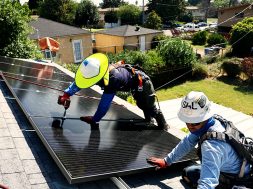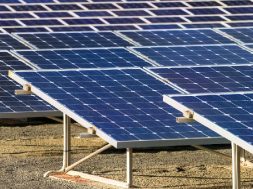
Solar roof top power can generate 3 lakh jobs in six cities of UP: CEED
Centre for Environment and Energy Development (CEED) has claimed that Uttar Pradesh has a great potential of solar rooftop power in six cities and it can generate 3 lakh jobs in the state.
CEED releasing its report “Uttar Pradesh: Uncovering Solar Rooftop Potential in Urban Cities” here on Friday claimed that by using just only 11 per cent of the built up area in six major cities could generate 11.4 Gigawatt or 11.400 MW of power. The report, while exploring the rooftop solar potential of six major cities – Lucknow, Kanpur, Agra, Meerut, Allahabad and Gorakhpur, suggests that the installation of solar rooftop up to its potential in these cities can generate 3 lakh jobs in the state.
Talking to reporters about the findings of the report, CEED’s Program Director Abhishek Pratap said here on Friday that solar rooftop has a game-changing potential to completely revitalise the development landscape with improved power supply, massive capital infusion and significant rise in job creation.
“The 11.4 GW of solar rooftop potential just in these six cities can bring Rs 570 billion investment in the solar energy sector in Uttar Pradesh alone, thus creating a ripple effect in employment generation with a possibility of 3 lakh jobs in next five years along with an expansive upliftment of manufacturing, assembling and service sectors in the solar industry,” he said while adding that “solar rooftop not only fuels investment and jobs, but also brings inclusive development by building sustainable energy infrastructure and maintaining healthy ecosystem’’.
UP government has already set up an ambitious target of generating 10,700 MW of solar power by the end of 2022. The target set for solar rooftop systems is 4,300 MW. CEED’s report reveals that about one-third of this target can be achieved by merely exploiting the potential of these six major cities. It also charts a sustainable and viable roadmap to make the cities of UP powered through solar energy.
“As these cities have well established urban residential settlements and overall infrastructure, their potential lies largely in the residential sector, followed by public/semi-public buildings and government buildings. With an overall solar suitable roof area of only 98.75 sq. km out of the total cities area of 5,958 sq. km, a total of 11.4 GW of solar power can be generated,” the report said.
Among these cities, Lucknow (3187 MW) has the maximum potential, followed by Kanpur (3010 MW) and Agra (1986 MW), whereas Gorakhpur (833 MW) has the lowest solar rooftop potential. The potential of the other two cities studied in the report – Allahabad and Meerut – are 1577 MW and 900 MW respectively.
However, due to the existing grid curtailment factor as per State net-metering guidelines and the power demand, 1674 MW can be immediately installed in these cities before year 2025. Out of these six cities, Lucknow can accommodate 725 MW, while Kanpur and Agra can accommodate 250 MW and 144 MW respectively. Allahabad can shelter 140 MW while Meerut and Gorakhpur can house 335 MW and 80 MW of solar rooftop power.
Recently, the UP Government made solar rooftop mandatory for all Government buildings and asked its departments to explore the uses of solar energy for catering their energy requirements. Anand Prabu Pathanjali, Manager – Clean Energy at CEED said, “For catalyzing energy transformation in the state, Government buildings offer best options with bundling of projects which help in reducing the cost. With solar price going down and reaching grid parity, industrial and commercial consumers should also be encouraged to adopt solar with even more enthusiasm as it helps in reducing their operation expenditure.















